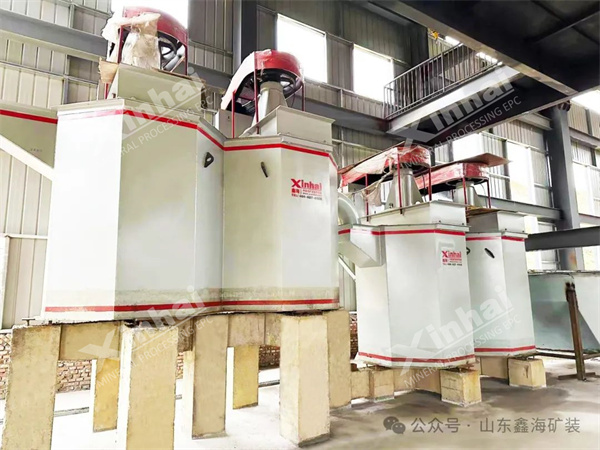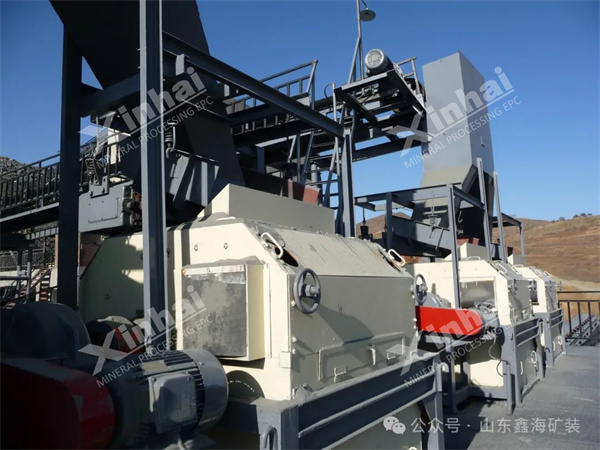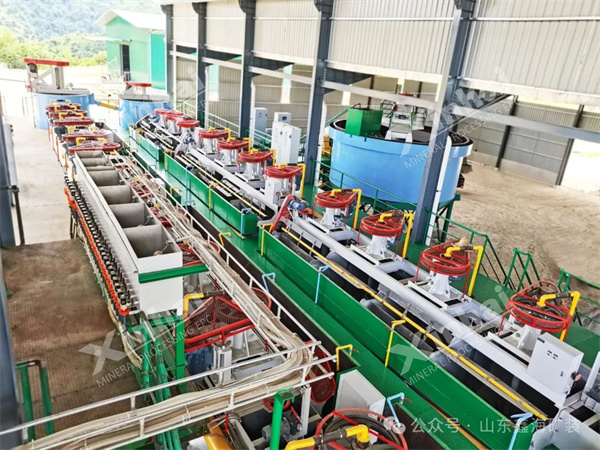Quartz sand is a key non-metallic mineral. Widely used in multiple industrial fields. Usually, it is necessary to purify quartz sand to meet the needs of different industries. Multiple factors need to be considered in each beneficiation stage to ensure that the quartz sand concentrate meets the expected quality.

The principle of scrubbing and graded desliming is to use mechanical force and the grinding force between sand particles to remove impurities and minerals such as film iron, bonding, and soil on the surface of quartz sand. And further crush the mineral aggregates that have not yet formed into individual units, and then achieve further purification of quartz sand through grading operations.
The factors that affect the scrubbing and desliming effects include the particle size of quartz sand, the types and contents of impurity minerals in the raw ore, the structural characteristics of the scrubbing machine, scrubbing time, and scrubbing concentration.
As the particle size of quartz becomes finer, the grade of SiO2 decreases, while the content of iron and aluminum impurities increases, especially in quartz sand containing a large amount of clay minerals. However, for the removal of thin film iron and adhesive impurities on the surface of quartz, equipment such as spiral scrubbing machines, drum screens, hydrocyclones, desliming hoppers, and hydraulic classifiers are often used for scrubbing and grading desliming to improve the treatment efficiency.
Research has shown that scrubbing concentrations between 50% -60% are ideal. The cleaning time should be based on meeting the product quality requirements to avoid excessive equipment wear and increased energy consumption. For quartz sand with unsatisfactory mechanical cleaning effect, using rod grinding for cleaning is a mature solution.

The magnetic separation process of quartz sand aims to remove magnetic impurities such as hematite and limonite, thereby reducing iron content, improving its use value and product quality.
The factors that affect the effectiveness of magnetic separation include the number of magnetic separations, magnetic field strength, and quartz sand particle size. As the number of magnetic separations increases, the iron content gradually decreases; Under a certain magnetic field intensity, most of the iron can be removed, but even if the magnetic field intensity increases significantly thereafter, the iron removal rate remains unchanged.
In addition, due to the high content of iron impurity minerals in fine-grained quartz sand, the finer the particle size of quartz sand, the better the iron removal effect.

The flotation method is used to remove non-magnetic associated impurities such as feldspar and mica from quartz sand. The properties of the ore and the selection and dosage of reagents affect the flotation efficiency of quartz sand.
In the process of fluorine flotation, the use of cationic collectors and hydrofluoric acid activators, although the flotation effect is significant, will produce fluorine containing wastewater that is harmful to the environment and needs to be treated before discharge.
Fluorine free flotation utilizes the structural differences between quartz and feldspar, and through the rational allocation of anionic and cationic mixed collectors, prioritizes the flotation of feldspar using their different Zeta potentials, achieving effective separation. This is a more environmentally friendly purification method.
After scrubbing, desliming, magnetic separation, and flotation, the purity of quartz sand can reach 99.3% -99.9%, basically meeting the needs of industrial sand.
Acid leaching is a process of purifying quartz sand by utilizing the characteristic that quartz is insoluble in acid (excluding HF) and other impurity minerals can be dissolved in acid solution. The effect is influenced by the type and concentration of acid, acid leaching time, temperature, and slurry stirring.
The removal effect of different acids on different metal impurities varies. The iron removal rate is very low when using nitric acid pickling alone; The removal rate of dicarboxylic acid (hydrochloric acid+hydrofluoric acid) is 58.1%, while the removal rate of ternary mixed acid can reach 67.7%.
The synergistic effect of mixed acid pickling significantly improves the efficiency of impurity removal, but it is necessary to control the HF concentration to generally not exceed 10% to avoid quartz dissolution. Dilute acid has a significant removal effect on Fe and Al, while concentrated sulfuric acid, aqua regia, or HF have better removal effects on Ti and Cr.
The use of mixed acids such as sulfuric acid, hydrochloric acid, nitric acid, and hydrofluoric acid for acid leaching can significantly improve the purity of quartz sand. An increase in temperature will accelerate the reaction rate and iron removal rate, but the effect tends to weaken with an increase in temperature. Therefore, the acid leaching process should try to reduce the concentration, temperature, and dosage of acid as much as possible, reduce the acid leaching time, and achieve efficient purification at lower beneficiation costs.
The beneficiation and purification of quartz sand is a systematic engineering process that involves multiple stages such as scrubbing, classification and desliming, magnetic separation, flotation, and acid leaching. The effectiveness of each stage is influenced by various factors, including raw ore properties, process parameters, equipment configuration, reagent system, etc. By comprehensively considering these factors, the purification process can be optimized, the purity of quartz sand can be improved, and the high standard requirements of different industrial applications can be met, thereby improving the economic benefits of the beneficiation plant.